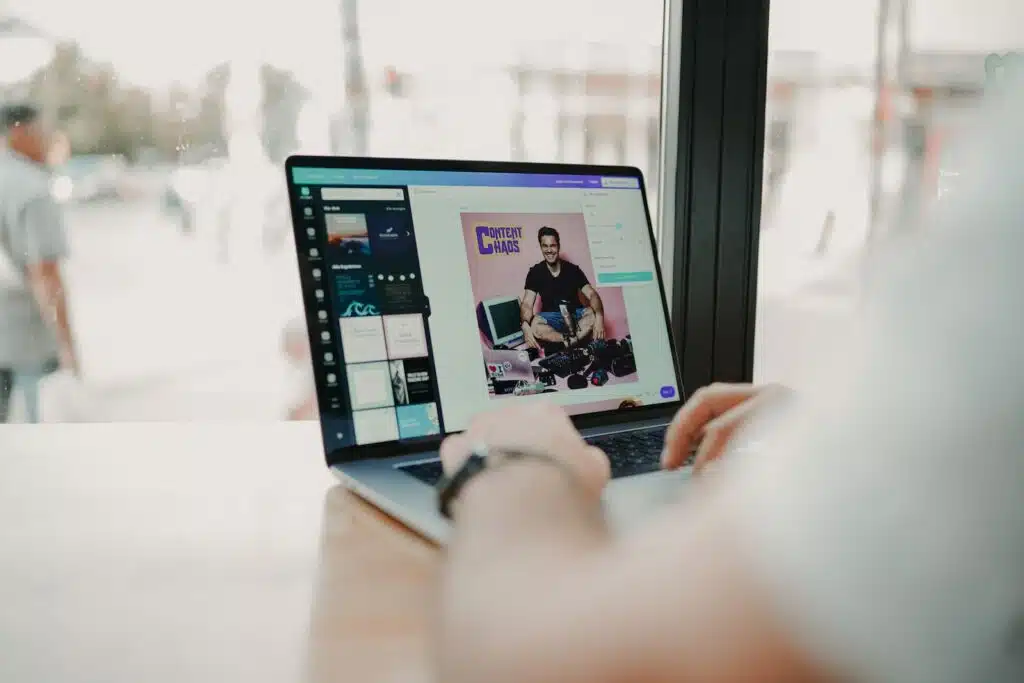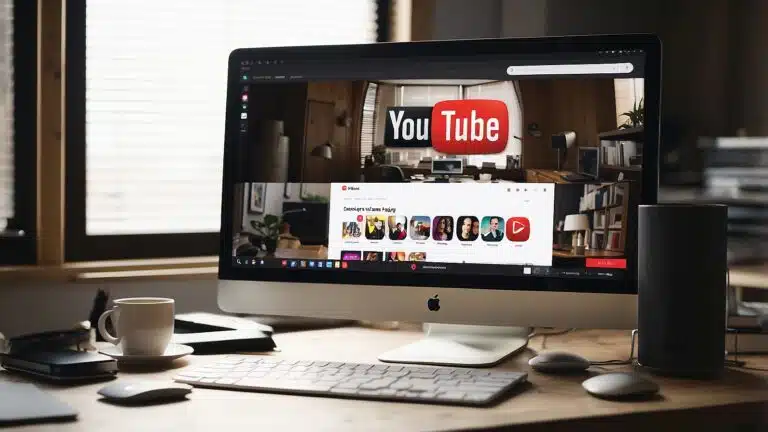Understanding the YouTube Algorithm

To navigate the complex world of YouTube and increase the visibility of your videos, it's important to understand how the YouTube algorithm works. YouTube's recommendation system is incredibly powerful, driving a significant portion of what people watch on the platform. Let's delve into the power of YouTube's recommendation system and the evolution of the YouTube algorithm.
The Power of YouTube's Recommendation System
YouTube's recommendation system plays a pivotal role in determining which videos users see and watch. In fact, as of 2018, approximately 70% of watch time on YouTube is spent watching videos that the algorithm recommends (Hootsuite Blog). This highlights the immense influence that the algorithm has on shaping our video consumption habits.
The recommendation system analyzes various factors to personalize video suggestions for each user. It takes into account the user's viewing history, their interaction with previous videos, and the behavior of users with similar interests. By leveraging this vast amount of data, YouTube strives to deliver a tailored and engaging experience for every user.
It's important to note that YouTube's recommendation system has undergone several significant changes over the years. In 2012, YouTube adjusted its algorithm to focus on time spent watching each video, which had an immediate impact on the types of content being created on the platform (Hootsuite Blog). Then, in 2015, YouTube began directly measuring viewer satisfaction through user surveys and prioritized engagement metrics like shares, likes, and dislikes (Hootsuite Blog). These updates reflect YouTube's continuous efforts to enhance the user experience and deliver more relevant content.
Evolution of the YouTube Algorithm
As YouTube continues to refine its recommendation system, it constantly adapts to the changing landscape of online video. Algorithm changes implemented in early 2019, for example, aimed to reduce the consumption of borderline content on the platform by approximately 70% (Hootsuite Blog). These changes reflect YouTube's commitment to promoting high-quality and relevant content while minimizing the spread of misinformation and harmful content.
YouTube's algorithm is an intricate and ever-evolving system. It takes into consideration various factors, such as user engagement, video popularity, and metadata, to determine which videos to recommend to each user. By understanding the inner workings of the algorithm, you can optimize your videos to increase their visibility and reach a wider audience.
In the following sections, we will delve deeper into how the YouTube algorithm works, exploring the factors that influence search rankings, the importance of user engagement, and the role of metadata in recommendations. We will also provide strategies to optimize your videos for the algorithm, enabling you to beat the system and grow your viewership and subscriber base. Stay tuned for valuable insights and tips on navigating the YouTube algorithm effectively.
How the YouTube Algorithm Works

Understanding how the YouTube algorithm works is essential for YouTubers who want to increase their visibility, rank higher in search results, and grow their views and subscribers. The algorithm takes into account various factors to determine search rankings, user engagement, and video recommendations.
Factors Influencing Search Rankings
When it comes to search rankings on YouTube, several factors come into play. The algorithm considers video relevance, engagement metrics, and the quality of the user's search query (HubSpot). By analyzing these factors, YouTube aims to provide users with the most relevant and helpful content.
To improve your search rankings, it's crucial to optimize your video's metadata, including the title, description, and tags. Including relevant keywords and descriptive information can increase the chances of your video appearing in search results. For more tips on optimizing your video content, check out our article on content for YouTube algorithm.
User Engagement and Video Popularity
User engagement metrics play a significant role in determining the ranking and visibility of videos in YouTube's search results. Metrics such as watch time, likes, comments, and shares are crucial indicators of a video's popularity and relevance (Search Engine Land). The more engagement your video receives, the higher the chances of it ranking well in search results.
To encourage user engagement, create compelling and high-quality content that resonates with your target audience. Engage with your viewers through comments, encourage them to like and share your videos, and ask for their feedback. These interactions not only improve engagement but also send positive signals to the algorithm.
The Role of Metadata in Recommendations
Metadata plays a vital role in YouTube's recommendation system. The algorithm analyzes various aspects of a video's metadata, including the title, description, and tags, to determine its relevance to a user's search query or interests. Optimizing your metadata with relevant keywords and accurate descriptions can significantly improve your video's visibility and reach.
When crafting your video's title, aim for clarity and relevance. Use concise and descriptive language that accurately represents the content of your video. In the video description, provide more context and additional information to entice viewers to watch. Don't forget to include relevant tags that describe the core topics or themes covered in your video.
By understanding the factors that influence YouTube's search rankings, user engagement, and video recommendations, you can optimize your videos effectively. Focus on creating high-quality content, engaging with your audience, and optimizing your metadata. Regularly analyzing your YouTube Analytics can provide valuable insights into your video's performance and help you make data-driven decisions to improve your strategy.
Optimizing Your Videos for the Algorithm

When it comes to maximizing the visibility and discoverability of your YouTube videos, optimizing them for the algorithm is crucial. By understanding the importance of video titles, crafting compelling video descriptions, and leveraging relevant video tags, you can enhance your chances of ranking higher in search results and attracting more viewers.
Importance of Video Titles
Video titles play a significant role in capturing the attention of potential viewers and improving your discoverability on YouTube. When creating video titles, it's important to use clear and descriptive language that accurately represents the content of your video. Incorporating relevant keywords in your titles can help your videos appear in search results when users are looking for content similar to yours.
To make your video titles more engaging, consider using compelling language that piques viewers' curiosity and encourages them to click and watch. However, it's essential to maintain honesty and avoid clickbait tactics that could lead to viewer dissatisfaction.
Crafting Compelling Video Descriptions
Video descriptions provide an opportunity to provide additional context and information about your video. Crafting compelling and informative descriptions can help viewers understand what your video is about and why they should watch it. When writing video descriptions, consider the following best practices:
- Provide a detailed and comprehensive description of your video, highlighting the key points and topics covered.
- Incorporate relevant keywords naturally throughout the description to improve your video's visibility in search results.
- Include links to your social media profiles, website, or any relevant resources mentioned in the video to drive traffic and engagement.
- Consider using timestamps in the description to help viewers navigate to specific sections of the video more easily.
Remember that video descriptions are also indexed by search engines, so optimizing them with relevant keywords can help improve your video's discoverability beyond YouTube.
Leveraging Relevant Video Tags
Video tags are another important element for optimizing your videos for the algorithm. Tags help YouTube understand the content of your video and connect it with relevant search queries. When selecting tags for your videos, consider the following best practices:
- Use tags that accurately reflect the main topics and keywords related to your video's content.
- Consider including long-tail keywords to attract more targeted audiences who are specifically searching for niche topics.
- Analyze the tags used by successful competitors in your niche to gain insights and ideas.
- Avoid tag stuffing, which means using excessive or unrelated tags. Instead, focus on using relevant tags that truly represent the content of your video.
By leveraging relevant video tags, you can increase the chances of your video appearing in search results and related video recommendations.
Optimizing your videos for the YouTube algorithm goes beyond titles, descriptions, and tags. It is also important to conduct keyword research using tools to identify popular and relevant keywords, maintain honesty in your video metadata, localize your content for specific regions or languages, and regularly monitor your video analytics to make performance adjustments when necessary.
By following these best practices and understanding the factors that influence YouTube's search and discovery system, you can improve the visibility and reach of your videos, ultimately growing your audience and engagement.
Strategies to Beat the Algorithm

To maximize your visibility on YouTube and beat the algorithm, it's important to implement effective strategies that help your videos rank higher and gain more views and subscribers. By focusing on building a strong subscriber base, encouraging engagement and interactions, and analyzing video analytics for performance, you can optimize your content to stand out in the competitive YouTube landscape.
Building a Strong Subscriber Base
One of the key factors that can positively influence your video rankings is a strong subscriber base. When you have a dedicated and engaged subscriber community, it signals to YouTube that your content is valuable and deserving of higher search rankings (HubSpot). Encourage viewers to subscribe to your channel by including a call-to-action in your videos, promoting your channel on other social media platforms, and consistently delivering high-quality content that resonates with your target audience.
Encouraging Engagement and Interactions
User engagement metrics, such as watch time, likes, comments, and shares, play a crucial role in determining the ranking and visibility of videos in the YouTube search results (Search Engine Land). To beat the algorithm, focus on creating content that encourages viewers to engage with your videos. Ask questions, invite comments, and respond to your audience to foster a sense of community. Encourage viewers to like, comment, and share your videos, as these interactions signal to YouTube that your content is valuable and deserving of higher search rankings.
Analyzing Video Analytics for Performance
Regularly analyzing your video analytics is essential for understanding how your content is performing and making data-driven decisions to improve your rankings. Pay attention to metrics such as watch time, audience retention, click-through rate, and average view duration. These insights can help you identify patterns, understand what type of content resonates with your audience, and optimize your future videos to better align with viewer preferences.
By leveraging the data provided by YouTube Analytics, you can identify areas for improvement, refine your content strategy, and make educated decisions to beat the algorithm. Experiment with different video formats, topics, and styles based on the insights you gather from your analytics to continually improve your performance and attract more viewers.
Remember, beating the YouTube algorithm is an ongoing process that requires consistent effort, creativity, and adaptability. Stay up-to-date with the latest trends, algorithm changes, and best practices to ensure your content remains relevant and appealing to your target audience. With the right strategies and a deep understanding of the YouTube algorithm, you can increase your chances of ranking higher, gaining more views and subscribers, and growing your presence on the platform.
YouTube's Search and Discovery System

YouTube's search and discovery system plays a vital role in connecting users with the most relevant and engaging content on the platform. Understanding how this system works can help you optimize your videos to increase visibility and reach a wider audience.
Personalized Recommendations
The YouTube search and discovery system takes into account various factors to provide personalized recommendations to users. These recommendations are based on the user's search history, location, language preferences, and engagement patterns. By analyzing these data points, YouTube aims to surface videos that align with the user's interests and preferences. This personalized approach enhances the user experience and ensures that users are presented with content that meets their needs and keeps them engaged.
Factors Considered in Search Results
When it comes to search results, the YouTube algorithm considers multiple factors to determine the ranking and visibility of videos. These factors include:
-
Relevance: The video's title, description, tags, and captions are crucial in determining its relevance to a user's search query. It's important to use relevant keywords and provide accurate descriptions to increase the chances of your video appearing in relevant search results.
-
User Engagement Signals: User engagement is a significant factor in the search and discovery system. Metrics such as watch time, likes, comments, and shares provide insights into how viewers interact with a video. Videos that generate high engagement signals are more likely to be recommended to a wider audience.
-
User Satisfaction: YouTube aims to deliver content that satisfies users' needs and preferences. By analyzing user feedback, such as feedback in the form of likes and dislikes, YouTube can assess the perceived quality and relevance of a video. Creating valuable and engaging content can help improve user satisfaction and increase the visibility of your videos.
To stay up to date with the latest changes and insights regarding the YouTube algorithm, it's important to regularly refer to reputable sources, such as FameFuel and Google Support.
YouTube's Continuous Updates and Improvements
YouTube's search and discovery system is not static; it undergoes continuous updates and improvements to enhance the user experience and provide more relevant recommendations. YouTube is committed to refining the algorithm to surface high-quality content and ensure that creators have the opportunity to reach their intended audience. Staying informed about the latest updates and best practices can help you adapt your content strategy and optimize your videos for the evolving YouTube algorithm.
By understanding how YouTube's search and discovery system operates, you can tailor your video optimization strategies to increase your chances of being discovered by the right audience. Keep in mind the importance of relevance, user engagement, and staying informed about algorithm updates to effectively navigate the YouTube platform and grow your channel.



























